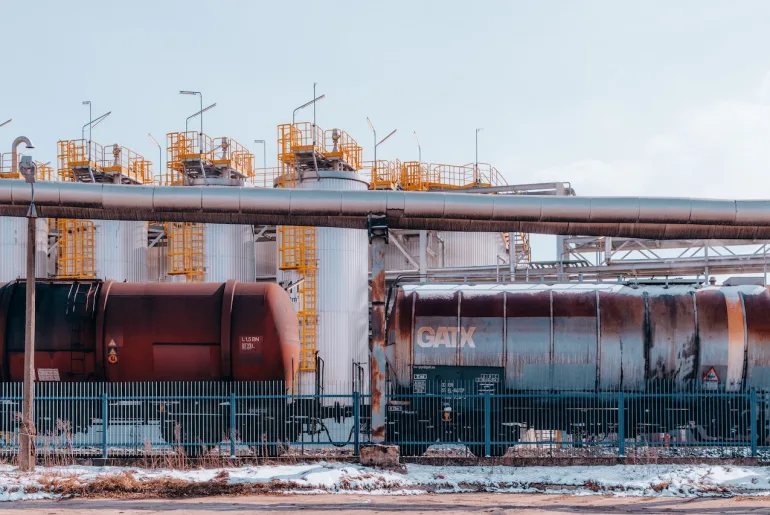Exploring the realm of API Risk-Based Inspection, this article delves into the relevant standards and benefits of this systematic approach. Unveiling how industries like oil and gas, petrochemicals, and power can harness API codes to enhance safety, efficiency, and informed decision-making through the core aspects of this crucial practice.
What Is Risk-Based Inspection?
Risk-based inspection (RBI) is an optimal maintenance operational process employed for the examination of industrial plant equipment, including pressure vessels, quick-opening closure – doors, heat exchangers, and piping in industrial plants. The main goal of RBI is to put inspections in order based on how risky each part could be.
The inspection considers different things like the state of the equipment, the operational surroundings, and the plausible outcomes in case of a malfunction. By looking at these things, engineers can find spots that could be potential risks and need more often and careful checking.
What Are The API Codes For Risk-Based Inspection?
The primary API code for risk-based inspection is API 580. This recommended practice was intended to provide guidelines on creating a risk-based inspection plan for fixed equipment and pipelines in the hydrocarbon and chemical processing sectors.
However, there are two API codes related to Risk-Based Inspection (RBI), API 580 and API 581. API 580, as mentioned previously, is the foundational standard that outlines the basic principles and methods for applying RBI in the oil and gas industry. Its main focus is on assessing and managing risks related to equipment integrity.
On the other hand, API 581 complements API 580 by offering extra resources to enhance the understanding of RBI. It provides more detailed insights into specific ways equipment can get damaged, different reasons it might stop working, and how to inspect it better.
What Is API Recommended Practice 580 Risk-Based Inspection?
API 580, often referred to as the “Risk-Based Inspection (RBI)” standard, holds a significant role among the API codes that pertain to the concept of risk-based inspection in the oil and gas industry.
API 580, the most crucial standard in risk-based inspection, is a comprehensive guide created by the American Petroleum Institute (API). This guide lays out the principles and steps for implementing risk-based inspection. It also encompasses maintenance and the management of valuable equipment. API 580’s core aims to aid industries in pinpointing and handling risks tied to the integrity of equipment. This, in turn, ensures that operations stay safe, reliable, and effective.
API 580 becomes especially important in the world of risk-based inspection because it provides a structured plan for sizing up the risks linked with equipment in industrial settings. It offers methods for evaluating what could happen if equipment stops working, taking into account things like how the equipment is made, how it’s used, and where it’s located.
In essence, API 580 empowers industries to tailor their inspection efforts based on how risky each piece of equipment is. This helps them wisely manage their resources and enhance overall safety.
What Is API 581 Risk-Based Inspection Technology?
API 581, often referred to as the “Resource Document for Risk-Based Inspection (RBI),” is a notable API code closely tied to the idea of risk-based inspection within the oil and gas industry. Consider API 581 as a valuable source book provided by the American Petroleum Institute (API).
While API 580 sets the foundation, API 581 serves as a companion manual that offers more detailed advice, information, and real-world examples to enhance the practice of RBI. This API code becomes crucial in the world of risk-based inspection because it acts as a comprehensive reference that engineers and those overseeing assets can refer to for deeper insights and better use of risk assessment techniques.
API 581 delivers a wider range of information about various ways equipment can get damaged, the different reasons it might fail, and the best methods for checking it, all contributing to a thorough risk evaluation.
What Are The Differences Between API 580 and 581?
|
API 580 Risk-Based Inspection |
API 581 Risk-Based Inspection Technology |
| The foundational principles and practices that guide the implementation of RBI focus on assessing and managing risks associated with equipment integrity. | Additional insights and detailed information for risk-based inspection. It acts as a resource document that enhances the practical application of RBI. |
| API 580 emphasizes the overall strategy and philosophy behind RBI. | API 581 focuses on providing engineers with deeper knowledge about specific damage mechanisms, failure modes, and inspection strategies. |
| It outlines methodologies for evaluating the potential consequences of equipment failure, determining risk levels, and prioritizing inspections accordingly. | It offers real-world examples and case studies to help engineers better understand these concepts. |
| Engineers use API 580 to establish the groundwork for risk-based inspection within their operations.
It provides a systematic approach to identifying high-risk areas and scheduling inspections accordingly. |
Engineers refer to API 581 alongside API 580 to gain a more nuanced understanding of potential risks and how to address them.
It helps engineers tailor their inspection strategies to specific equipment types and operating conditions. |
In summary, API 580 sets the foundation for risk-based inspection by outlining principles and methodologies, while API 581 acts as a supplementary resource that deepens engineers’ understanding with practical insights and examples. Together, these standards enable industries to implement effective risk assessment practices and enhance the safety and reliability of operations in the oil and gas sector.
What Are The Benefits of Complying with API Risk-Based Inspection Codes?
The guidelines offer benefits ranging from improved safety and cost efficiency to extended equipment lifespan and enhanced operational reliability, such as:
1. Enhanced Safety
Adhering to API risk-based inspection codes ensures the proactive identification and resolution of potential equipment risks. This minimizes the likelihood of unexpected failures, reducing the risks of accidents and environmental harm.
2. Cost Efficiency
API codes provide systematic guidelines for focusing inspections on high-risk areas. This efficient resource allocation optimizes maintenance efforts, resulting in long-term cost savings.
3. Prolonged Equipment Lifespan
Risk-based inspection detects and addresses issues before they escalate. Consequently, equipment longevity is extended, reducing the frequency of replacements and associated costs.
4. Regulatory Compliance
Compliance with API codes ensures adherence to industry standards and regulations. This prevents penalties and legal consequences, maintaining a positive reputation.
5. Operational Reliability
By identifying equipment weaknesses preemptively, API codes improve operational reliability. Reduced downtime and enhanced productivity follow suit.
6. Informed Decision-Making
Structured risk assessment methodologies provided by API codes empower informed decisions about inspections, strategies, and resource allocation.
7. Boosted Stakeholder Confidence
Compliance with API codes enhances stakeholder confidence, reflecting dedication to safety, industry standards, and optimal practices.
8. Effective Planning
Risk-based inspection guidelines aid in creating efficient maintenance schedules and asset management plans. This proactive approach minimizes emergency repairs and operational disruptions.
In summary, adhering to API risk-based inspection codes not only aligns companies with best practices but also fosters safer operations, cost savings, and operational efficiency within the challenging oil and gas industry.
Hence, becoming skilled in API 580 and API 581 is not just a skill, it is a vital asset for effective risk-based inspection. API 580 forms the base for understanding how to evaluate risks, while API 581 adds more knowledge about potential damage and failures. This proficiency helps experts accurately assess risks, decide which inspections to focus on, and create plans to prevent problems.
Continuing with this, PetroSync crafts the API 580 and API 581 training that offers a valuable pathway for engineers to truly master risk-based inspection and the concepts laid out in the base resource documents.
This API 580 & API 581 course equips professionals with a comprehensive understanding of risk assessment methodologies as well as detailed insights into potential equipment vulnerabilities and failure modes.
By undergoing this training course, you can elevate your expertise, enabling you to confidently implement risk-based inspection strategies, make informed decisions about inspections, and develop effective mitigation plans. With PetroSync‘s API 580 and API 581 training, you can harness the power of these standards to enhance safety, optimize operations, and drive excellence in industries such as oil and gas.
Credit header image: Pexels

SEO specialist by day, fact-checker by night. An avid reader and content writer dedicated to delivering accurate and engaging articles through research and credible sources.







